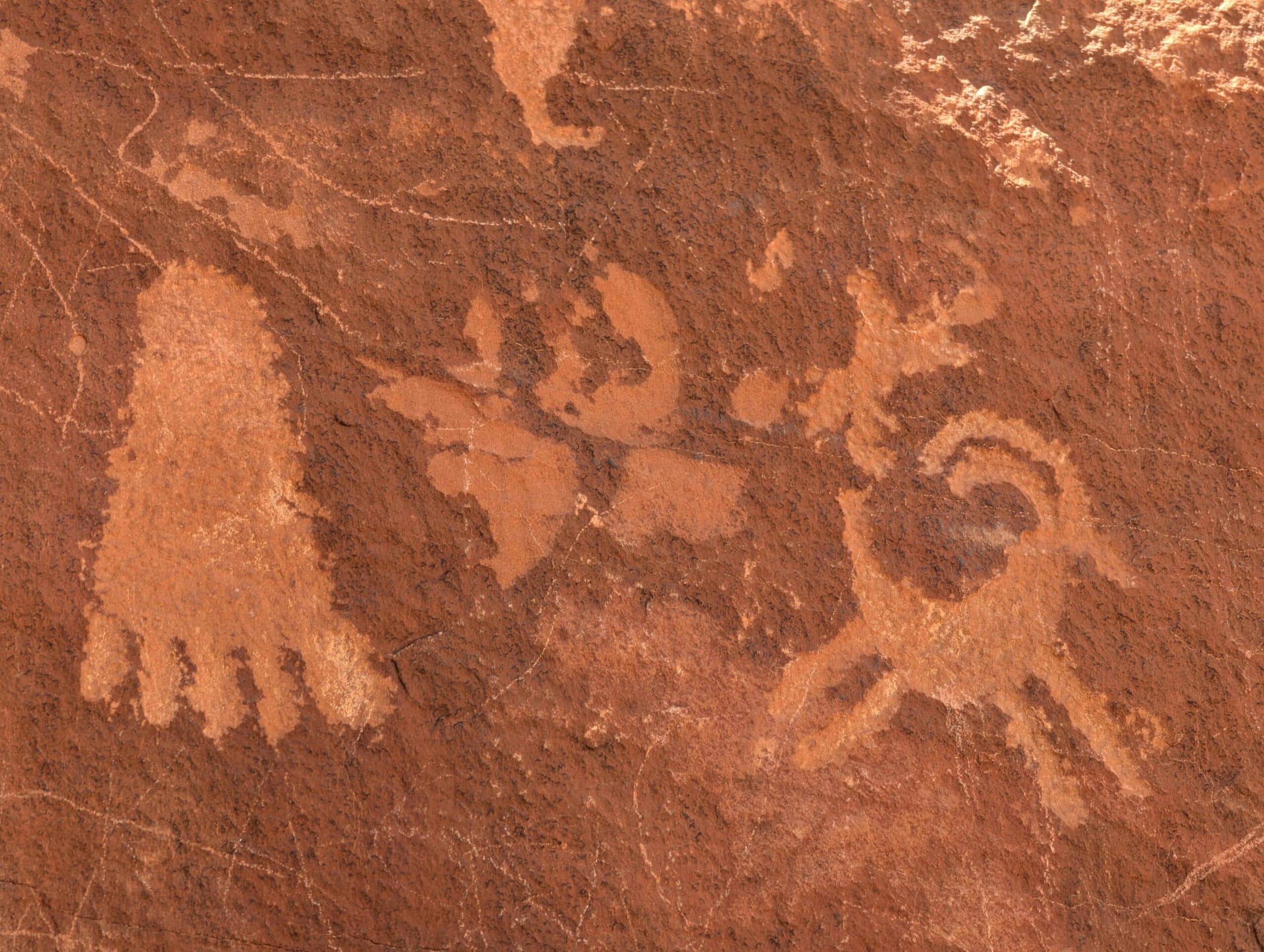


Central Question: How have Native American and settler encounters on the western frontier evolved over time?
Although Americans and Native Americans had been interacting for hundreds of years in the eastern United States, the native peoples in the western part of the continent had enjoyed relative peace until the 19th century. The occasional trader or explorer interacted with native tribes, but most interactions were brief and nonviolent. Tribal culture flourished, relatively untouched by white American society. Following the Civil War, however, as white settlers began seeking land out West, conflict increased and turned violent. From the late 19th century through today, the interactions of native peoples with American society have remained tense and fraught.
For more background, read “American Indians and the Transcontinental Railroad” and “The Impact of Horse Culture” on the Gilder Lehrman Institute of American History website (free login required), and “The Homestead Act” on the History Channel website.
Scholars understand and can fluently use the following Unit 3 Key Terms:
Scholars understand the changing nature of Native American and settler encounters over the course of the 19th century and can explain how these encounters have evolved into the 21st century.
Preparation
Launch (2 minutes)
Watch (10 minutes)
Read (10 minutes)
Discuss (5 minutes)
Homework
Central Question: How did western settlers and Native Americans view one another following the Civil War?
As settlers moved westward in staggering numbers, the relative peace experienced by the Sioux and other tribes of the West was put at risk. Settlers destroyed Native American land to build the Transcontinental Railroad and massacred the buffalo population, destroying the main source of food and raw materials for native communities. To the Native Americans, the “white man” was an invader of their lands. To settlers, Native Americans were savage and violent and stood in the way of their dreams to control the continent.
For more background, read “American Indians and the Transcontinental Railroad” on the Gilder Lehrman Institute of American History website (free login required).
Scholars plan and draft speeches with strong ideas backed by evidence that develops, supports, or proves their claims.
Preparation
Launch (2 minutes)
Read (20 minutes)
Discuss (3 minutes)
Give scholars 2 minutes to revise their main idea annotations for the documents based on the discussion.
Discuss (3 minutes)
Outline (15 minutes)
Draft (15 minutes)
Teacher Feedback Guidance
Central Question: How did western settlers and Native Americans view one another following the Civil War?
Scholars revise their speeches based on individualized teacher feedback to make their speeches stronger and clearer and understand how to use their feedback to grow as writers.
Preparation
Homework
Teacher Feedback Guidance
Central Question: Why did war erupt on the western frontier?
As tensions grew between white settlers and Native Americans across the western frontier, wars erupted. Known collectively as the Indian Wars, settlers and U.S. armed forces clashed with Plains Indian tribes in a number of different battles and massacres.
For more background, read “How the Civil War Became the Indian Wars” on the New York Times
website.
Scholars understand and can fluently use the following Unit 3 Key Terms:
Scholars understand the major events of the Indian Wars and can explain why war erupted between Native Americans and settlers on the western frontier.
Launch (2 minutes)
Watch (14 minutes)
Discuss (4 minutes)
Watch (14 minutes)
Discuss (6 minutes)
Homework
Central Question: How did the Indian Wars affect Native American communities in the West?
Despite the success of some battles, such as the Battle of Little Bighorn, most tribes did not stand a chance against the U.S. military. The goal from the 1860s through the 1880s was to force native tribes off of their lands and onto reservations. By the end of 1890, the army had defeated the last resistance and resettled Native Americans onto the reservations while also effectively eliminating their life source: the buffalo. Many Native Americans living on reservations faced many hardships and grew dependent on the federal government for food and supplies.
For more background, read “Where the Buffalo No Longer Roamed” on the Smithsonian magazine website.
Scholars understand and can fluently use the following Unit 3 Key Term:
Scholars plan and draft speeches with strong ideas backed by evidence that develops, supports, or proves their ideas.
Preparation
Launch (2 minutes)
Read (20 minutes)
Discuss (3 minutes)
Give scholars 2 minutes to revise their main idea annotations for the documents based on the discussion.
Discuss (3 minutes)
Outline (15 minutes)
Draft (15 minutes)
Teacher Feedback Guidance
Central Question: How did the Indian Wars affect Native American communities in the West?
Scholars revise their speeches based on individualized teacher feedback to make their speeches stronger and clearer and understand how to use their feedback to grow as writers.
Preparation
Homework
Teacher Feedback Guidance
Central Question: Why did the United States pass the Dawes Act?
In 1887, Congress passed the Dawes Act. In response to the overwhelming poverty experienced on reservations, the act instead proposed breaking up reservations and giving individual land parcels to Native Americans. Any Native American who accepted an individual land parcel could become a U.S. citizen. The second goal of the act was to assimilate Native Americans into white American culture. Alongside the act, schools to “civilize” Native Americans were established, with the goal to “Kill the Indian, Save the Man.” The act also allowed the government to sell former reservation land to non-Native Americans, leading to a massive land grab of Native American lands.
For more background, read “Indian Territory and the Dawes Act” on the National Archives website and “The Dawes Act” on the University of Houston Digital History website.
Scholars understand and can fluently use the following Unit 3 Key Terms:
Scholars understand the significance of the Dawes Act and can explain different perspectives for and against passage of the act.
Preparation
Launch (2 minutes)
Watch (8 minutes)
Discuss (5 minutes)
Investigate (20 minutes)
Homework
Central Question: Why did the United States adopt assimilation policies at the end of the 19th century?
Following the passage of the Dawes Act, the U.S. government, as well as many philanthropic societies, pushed for policies that aimed to assimilate Native Americans into white American society. Assimilation often meant attending Indian schools that promised to “Kill the Indian, Save the Man” in an effort to erase all aspects of tribal culture from Native American children. These assimilation policies played a significant role in devastating Native American communities and destroying their cultures and heritage.
For more background, read “How Boarding Schools Tried to ‘Kill the Indian’ Through Assimilation” on the History Channel website.
Scholars understand and can fluently use the following Unit 3 Key Term:
Scholars understand the effects of assimilation policies on Native Americans and create cartoons that illustrate these effects.
Preparation
Launch (2 minutes)
Examine (10 minutes)
Discuss (3 minutes)
Give scholars 2 minutes to revise their main idea annotations for the images based on the discussion.
Discuss (3 minutes)
Revise — 10 minutes
Homework
Central Question: How did U.S. government policies affect Native American territories over time?
Following the Dawes Act, Native American tribes lost two-thirds of their land. Through the mid-20th century, many Native American children were forced to attend assimilation schools, and families were removed from the frontier to cities to better adapt to white American culture. Beginning in the 1960s, the
U.S. government began recognizing the sovereignty of the tribes and establishing more acts to restore their tribal autonomy. However, the Native Americans recovered barely a fraction of the land they once controlled on the continent. Today, tribal communities struggle with higher rates of poverty, addiction, and crime than any other minority group in the United States.
For more background, read “Native Americans and the Federal Government” on the History Today website.
Scholars understand how native tribal territories have changed over time and can explain the impact of evolving U.S. government legislation on tribal territorial ownership by creating maps.
Preparation
Launch (2 minutes)
Watch (2 minutes)
Discuss (6 minutes)
Homework
Central Question: How does federal American Indian policy continue to affect Native American communities today?
In the 21st century, Native American communities — especially those living on reservations — have faced a host of challenges, many of which stem from the conflicts of the 19th century. Native Americans on reservations face extreme poverty, poor education, multiple public health crises, sustained conflicts over land, and threats to their very own cultural survival. Although the U.S. government, with the Bureau of Indian Affairs, has attempted to ameliorate many of these problems, many of these challenges can trace their roots back to the actions and policies of the government not so long ago.
For more background, read “13 Issues Facing Native People” on the Huffington Post website, “Indian Country: Today’s Challenges” on the PBS website, and “Native American Property Rights” on the Atlantic website.
Scholars understand how federal American Indian policies have continued to affect Native American communities in the United States and conduct research on a topic about Native Americans in the present day that will prepare them to create a trifold.
Teacher Feedback Guidance
Central Question: How does federal American Indian policy continue to affect Native American communities today?
Scholars plan and draft a clear and compelling trifold that answers their Central Questions with strong ideas and evidence from their research that supports or proves their ideas.
Preparation
Teacher Feedback Guidance
Central Question: How does federal American Indian policy continue to affect Native American communities today?
Scholars create creative and compelling trifold and oral presentations based on their presentation plans.
Preparation
Plan (15 minutes)
Preparation (5 minutes)
*To access all articles on the Newsela website, you must create a free account.
Prompts: Scholars may choose one of the following prompts about Big Ideas in American history.
Project Menu: Scholars may then choose to respond to the prompt chosen above with one of the formats outlined below.
resources
Access a wide array of articles, webinars, and more, designed to help you help children reach their potential.

ES PBL Grade 2: Brooklyn Bridge
Educator
Curriculum
Elementary School
2nd
PBL

ES PBL Grade 3: Iroquois and Lenape
Educator
Curriculum
Elementary School
3rd
PBL

Grade 1: PBL School – How It Works!
Educator
Curriculum
Elementary School
1st
PBL

Grade 4: PBL A Nation is Born
Educator
Curriculum
Elementary School
4th
PBL
NEWSLETTER
"*" indicates required fields
